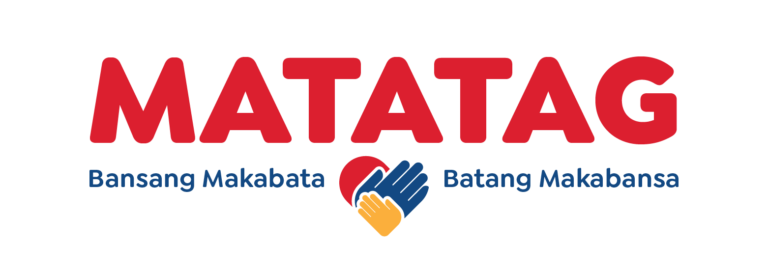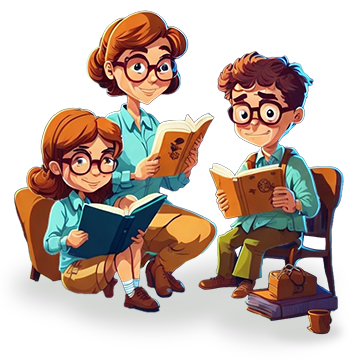
Download the MATATAG Filipino Curriculum Here
The MATATAG K to 12 Curriculum is focused on developing a complete and useful Filipino with high literacy skills that can be used in everyday life. It aims to make individuals “globally competitive” and “future-ready.” Filipino is one of the fundamental subjects that fosters literacy, communicative abilities, critical understanding of various text types, and the development of multimodal skills with a strong emphasis on the Filipino language and other languages in the country, culture, and texts that will guide their learning and development of 21st-century skills for a beneficial contribution as both national and global citizens.
To achieve this goal, the Filipino curriculum must adapt to changing times. Several factors are associated with these changes, so the establishment of standards, competencies, and lessons has been carefully recorded and analyzed based on the needs of millennial students and the capabilities of teachers who will deliver it. Not only the curriculum guide was given attention, but also the learning resources for students and teachers as support for the new curriculum, which will come from various sectors of society, including the government, social agencies, private and public institutions, local government, media, homes, and other sectors of society.
The focus of the new curriculum in Filipino is the Core Ideas – Literacy, Language, and Text (LWT). It is the main framework for teaching the Filipino language for comprehensive student learning. It serves as a rich source of knowledge for learning other fields and contributes to the necessary literacy skills, such as listening, speaking, reading, writing, and viewing. It will also pave the way for students to excel in communication confidently and be able to face various situations using their own language (whether it’s their first or second language), identity, and culture.
In developing the Filipino curriculum, it was based on the nature and needs of students in learning and using language, text, and technology, as well as the social, local, and global community needs. It also drew on philosophical theories of education, education laws, language policies, and Filipino theories, as well as some Western theories contextualized to Filipino to achieve a truly nationalistic curriculum.
Filipino K-10 Standards:
A. Core Learning Area Standard:
Students demonstrate literacy, communicative abilities, critical understanding of various text types, and the development of multimodal skills with a strong emphasis on the Filipino language and other languages in the country, culture, and texts that will guide their learning and development of 21st-century skills for a beneficial contribution as both national and global citizens.
B. Key Stage Standards:
K – 3
By the end of Grade 3, students demonstrate literacy skills, proficiency in using the language (listening and speaking), comprehension skills (reading), and proficiency in producing text (writing) using the Filipino language with correct grammar and discourse to develop full literacy in language and text.
4-6
By the end of Grade 6, students demonstrate primary and critical literacy skills, and the development of macro-literacy skills in Filipino using various purposes, participants, contexts, situations, cultures, and themes. In addition, they have knowledge of visual elements to create various multimedia texts using the Filipino language to develop language skills acquired in the first stage as evidence of learning progress.
7-10
By the end of Grade 10, students demonstrate communicative skills, creativity, and a deep understanding of written texts, Masterpieces, and visual texts using the Filipino language as an intellectual language that reflects multilingual and multicultural literacy towards the creation and presentation of multimodal texts to develop skills in understanding and analyzing texts with literacy acquired in the first stage and language skills from the second stage to become a tool for national and global citizenship.
Grade Level Standards:
Grade 2:
After the Second Grade, students are expected to demonstrate phonological awareness, proficiency in expression, analysis, and creation of narrative and informative text using the words learned in the Filipino language with correct grammar and discourse about self, family, community, and environment.
Grade 3:
After the Third Grade, students are expected to demonstrate proficiency in expression, analysis, and creation of narrative and informative text using the words learned in the Filipino language with correct grammar and discourse about self and the nation.
Grade 4:
After the Fourth Grade, students are expected to demonstrate primary and critical panliteracy skills, effective communication skills using language (grammar) in discourse that emphasizes the relevance of knowledge, ideas, and feelings that are age-appropriate, gender-sensitive, cultural, and purposeful, while using the knowledge acquired about visual elements in meaning-making and analysis regarding community and country.
Grade 5:
After the Fifth Grade, students are expected to apply panliteracy skills, expand vocabulary for critical understanding, and create narrative and informative texts on topics related to the community and country.
Grade 6:
After the Sixth Grade, students are expected to apply panliteracy skills, expand vocabulary for critical understanding, and create narrative and informative texts on topics related to the country and the global context.
Grade 7:
After the Seventh Grade, students demonstrate communicative skills and understand and analyze the Masterpiece Ibong Adarna, written texts such as literature from the Indigenous Period to the Spanish Colonial Period, as well as informational, academic, and visual texts for the creation of meaningful multimodal texts using learned linguistic elements toward shaping Filipino identity and values.
Grade 8:
After the Eighth Grade, students demonstrate communicative skills and understand and analyze the Masterpiece Florante at Laura, written texts such as literature from the Propaganda Period to the Japanese Occupation, as well as informational, academic, and visual texts for the creation of meaningful multimodal texts using learned linguistic elements towards the appreciation of their own culture.
Grade 9:
After the Ninth Grade, students demonstrate communicative skills and understand and analyze the Masterpiece Noli Me Tangere, written texts such as literature from the Independence Period to the New Millennium, as well as informational, academic, and visual texts for the creation of meaningful multimodal texts using learned linguistic elements with social awareness.
Grade 10:
After the Tenth Grade, students demonstrate communicative, creative, and critical skills in understanding and analyzing the Masterpiece El Filibusterismo and literary texts (from the Contemporary/Modern Period), Official Correspondence, informational, academic, and visual texts for the creation of meaningful multimodal texts for specific purposes, interpretation, and target readership towards achieving Filipino development in a beneficial performance as national and global citizens.
Download the MATATAG Filipino Curriculum Here
Matatag Curriculum Guide

Kindergarten CG 2023

Reading and Literacy CG 2023

English CG 2023

Araling Panlipunan CG 2023

Filipino Kurikulum CG 2023

GMRC and VE CG 2023

Language CG 2023

Makabansa CG 2023

EPP TLE CG 2023

Mathematics CG 2023

Music and Arts CG 2023

PE and Health CG 2023

